The long-term mission of NASA finally withdrawing by six people to a narrow dome-like facility for one year assuming life on Mars finally finished

The plan to send mankind to Mars is realistic at once with the progress of rocket technology. For human beings to stay on Mars in a completely different environment from the Earth, it is necessary to make effective use of limited resources and space, and for the past 1 year, 6 people The project that the crews of the crews live together in a narrow domed facility was carried out and finally the long-term mission was over.
Nasa ends year-long Mars simulation on Hawaii - BBC News
http://www.bbc.com/news/world-us-canada-37211051
A year ago, six scientists at Hawaiian volcano assumed Mars "HI-SEASYou can check the beginning of the HI-SEAS project that you live together in a small domed facility called "Hawaii Space Exploration Analog and Simulation" in the following movie.
The Hawaiian dome where Nasa prepares humanity for life on Mars | Guardian Docs - YouTube
Life on Mars is far from comfortable. There is little atmosphere to breathe and there is no soil to grow plants.
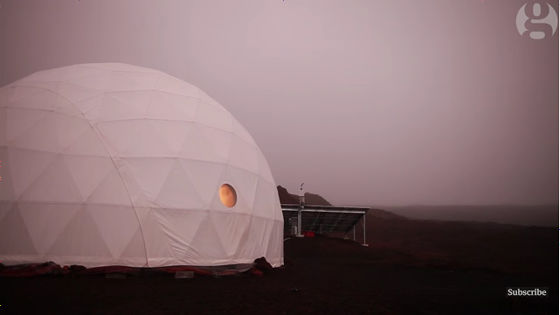
Therefore, if you go outside HI - SEAS you need to wear space suit.
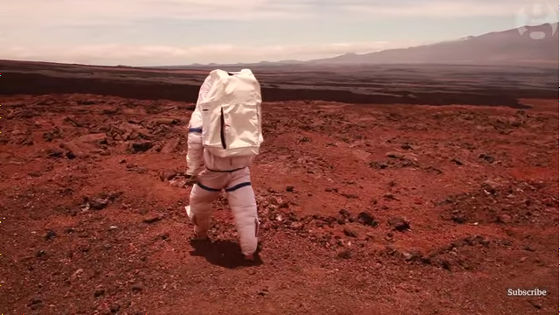
The HI-SEAS project is a project where six people crews live together in a narrow HI-SEAS for a long period of time, considering the land of Mauna Loa Volcano in Hawaii as Mars.
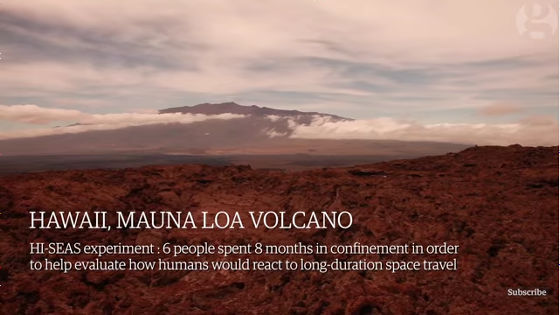
HI-SEAS has stairs and ... ...
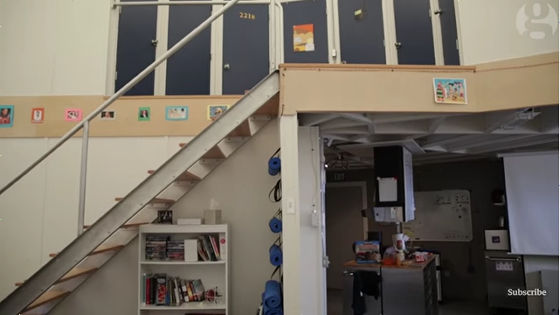
There is also a private room.

A white board is also prepared so that you can grasp the situation of each other.

Although there is a private room, privacy is hardly secured.

Crews will experience the difficulty of living on Mars that they will co-live for a long time with other members in a small space.

The HI - SEAS project started on August 29, 2015.

Six crews began sending virtual "Martian life".

Finally the long-term mission of one year is finally over on August 29, 2016, and the way the crews "return" to the earth can be confirmed in the following movie.
Six Scientists Lived in a Tiny Pod for a Year Pretending They Were on Mars - YouTube
With the call of "3, 2, 1, Come On!" ...

Six people from the Pod called "HI-SEAS" appeared. It is the moment when the one-year Martian migration simulation / mission finally ended.

Six people are in a state of health.

The experiment was done in such an environment.

"The HI-SEAS program is an international collaborative project between NASA and the University of Hawai'i, where six scientists live together on a virtual Martian Hawaii for one year," says Kim, University of Hawaii Mr. Binstead.

In HI - SEAS there was training equipment, and the six crews trained on the assumption of Mars.

Training is not only in the small HI - SEAS, but also there is a Mars exploration mission to do outside. When going out of HI - SEAS it was obliged to wear space suit like Mars.

As a scientist who anticipates that the mission on Mars will last for a long period of 1 to 3 years there is a long-term need to co-operate with colleagues in a different world from the earth. The experiment of this time is the second long-term experiment so far as training assuming Mars.

The longest is the following experiment conducted in Russia.
Six men who challenged the experiment to simulate manned flight to "Mars" in 520 days of withdrawal life - GIGAZINE

HI-SEAS of the night is fantastic.

There seems to be a kitchen and tables in HI-SEAS, too.

In the one-year simulation, we gave the environment assuming life on Mars.

For example, it is assumed that the communication environment is very slow, and a time lag of 20 minutes is established for sending and receiving e-mails.

Given food as well, tuna can, flour, restricted amount of water etc.

Also, electricity was covered by solar power generation.

A virtual experiment to raise crops on Mars was also conducted, and it was found that plants could be raised even with less water than I imagined.

One year's experiment was a great success. By the way the things that the crews first "eaten" back to the earth are said to be pizza and bananas that can never be eaten on Mars.

The six crews said they tried to avoid space conflicts as much as possible in order to make effective use of limited space resources. After completing the one-year long-term mission, commander crew Carmel Johnson says that it was the most difficult to secure privacy, "Life at HI-SEAS is always like a roommate" . However, Cyprian Berseux, one of the crews, said, "I think that technological and psychological obstacles can be overcome," he said that he had the impression that in the near future missions on Mars would be realistically possible is.
By the way, NASA is developing a new space ship "Orion" to send humanity to Mars, and plans to launch it for Mars in 2020.
NASA will soon carry out the flight test of Mars spaceship "Orion" and announce new illustration - GIGAZINE

It is not only NASA planning manned exploration to Mars, SpaceX is also developing a manned type spaceship "Crew Dragon".
Crew member of a private manned spacecraft "Crew Dragon" Inside the capsule is released, to the first flight of 2017 - GIGAZINE
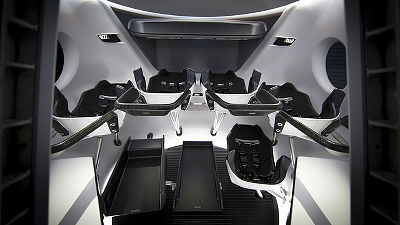
In addition, as early as 2018 and launch a new spaceship "Red Dragon" faster than NASA, Eleon Mask of SpaceX has tweeted it.
Planning to send Dragon to Mars as soon as 2018. Red Dragons will inform overall Mars architecture, details to comePic.twitter.com/ u4nbVUNCpA
- SpaceX (@ SpaceX)27th April 2016
In addition, SpaceX decided to use large amounts of carbon fiber lighter and stronger than aluminum for Falcon 9 and Red Dragon, and concluded a huge long-term supply contract of 200 billion yen or more with Toray, the largest carbon fiber manufacturer , Mask CEO's merit is transmitted.
Toray, spaceship with carbon fiber space X basic agreement Light weight and high durability Over 200 billion yen in long term supply: Nihon Keizai Shimbun
http://www.nikkei.com/article/DGKKASDZ16HI4_W6A810C1MM8000/
Nonetheless, technical problems such as spaceships are thought to be cleared up sooner or later in order to send mankind to Mars, but there are also indications that the human body may not catch up. In the human body the muscles are weakened in outer space, the bone density decreases by 1.5% in one month, and the eyeball has problems such as becoming more susceptible to diseases, and from 6 months to 8 arrival by Mars It is thought that the limits of human body will come by long-term space flight which takes time as long as a month. In order to send mankind to Mars, there seems to be a big problem of not only technical problems but how to adapt the human body.
Why the Human Body Is not Ready to go to Mars ... Yet | WIRED Lab - YouTube
Related Posts:






